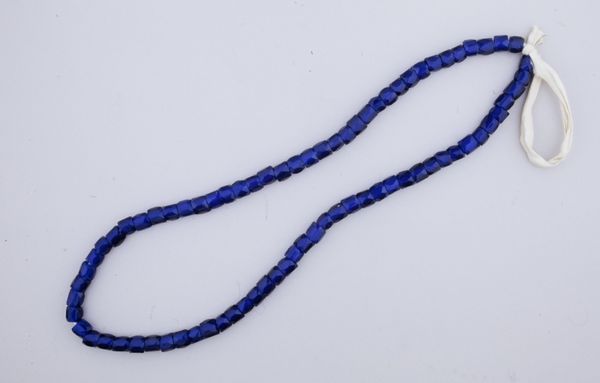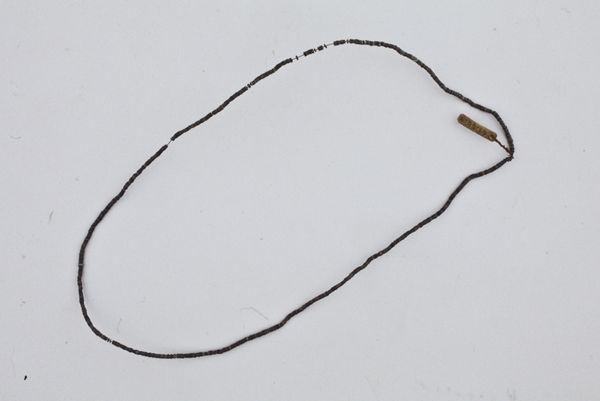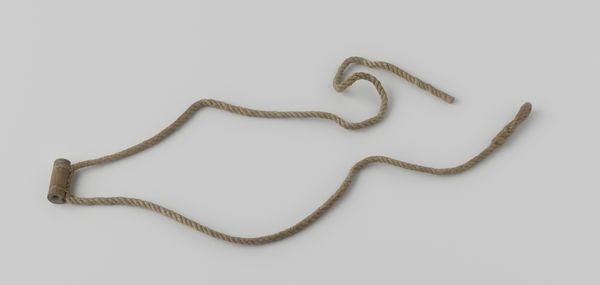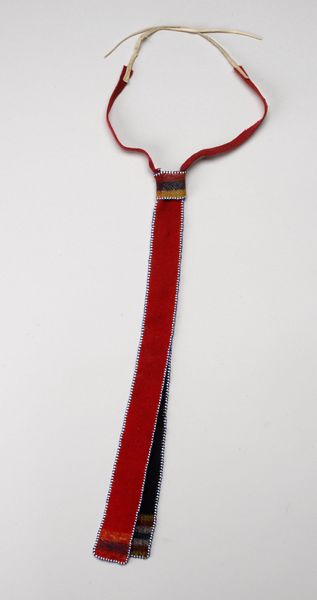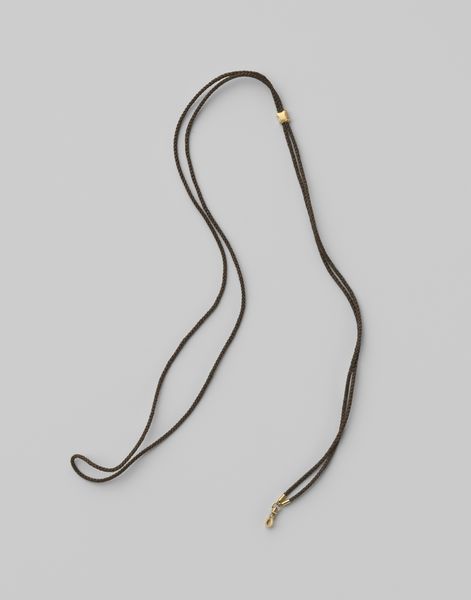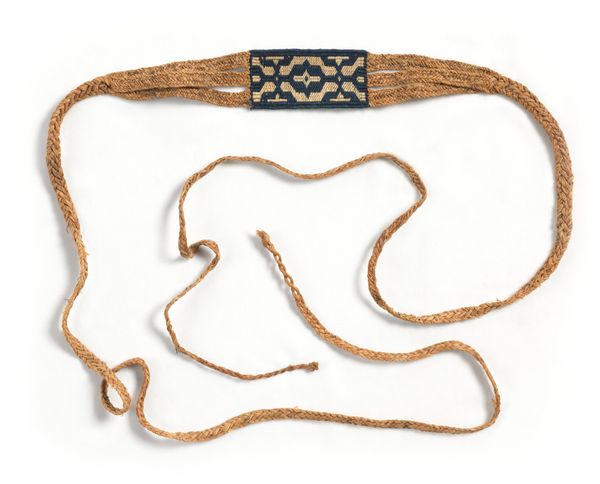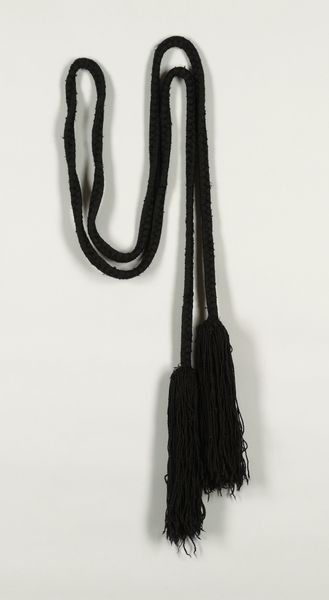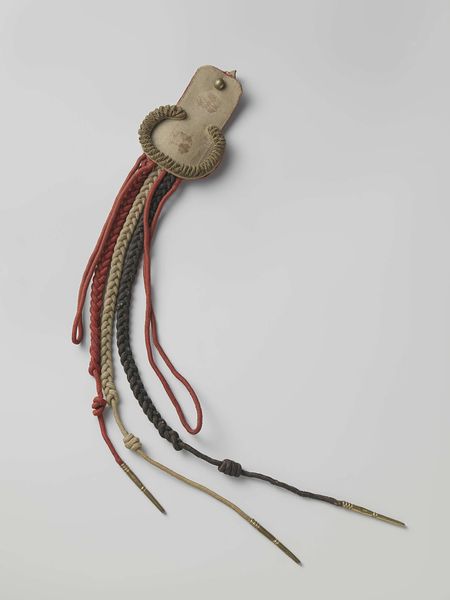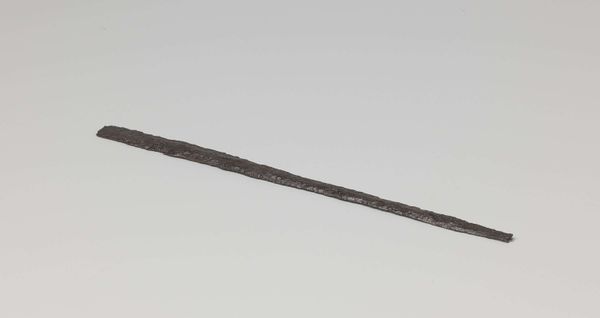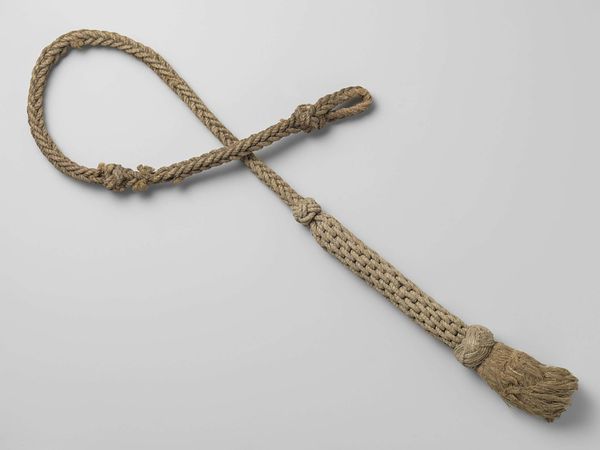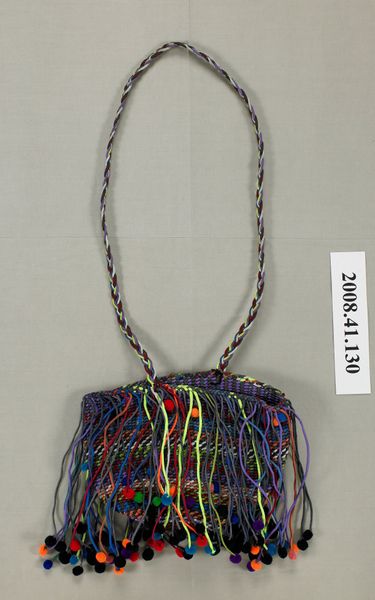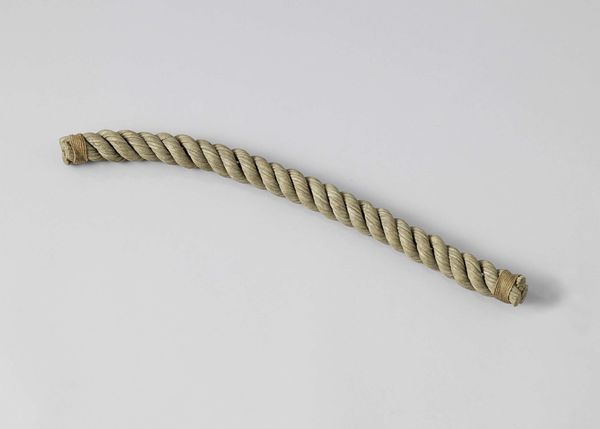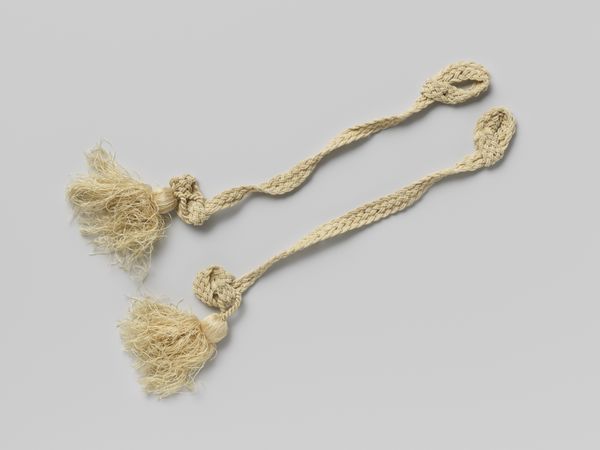
glass
#
glass
#
indigenous-americas
Copyright: Public Domain
Curator: I’m immediately struck by the minimalist simplicity of this piece. Editor: Indeed. What we have here is a necklace crafted circa the 20th century by an artist of the Navajo, or Diné, people. It is composed of mixed media, including glass and what appears to be textile elements, presenting a rather unique interplay of materials. Curator: That precise blue against, presumably, skin. There's a clean geometry at play—each small square bead linked in succession to create a simple, elegant whole. It's not just decorative; it feels almost architectural in its repetitive structure. Editor: Precisely! And from a materialist perspective, we must consider the labor involved in creating such a piece. The evenness of the beads suggests careful craftsmanship, each bead individually formed and strung, likely holding a deep connection to the maker's identity. Curator: I'm fascinated by that choice of blue. In Navajo symbolism, blue can represent the sky, water, or even happiness. Considering that and the necklace form itself, the meaning might transcend pure decoration—potentially holding profound cultural or spiritual significance. Editor: I wonder about the accessibility of glass during the period this necklace was crafted. Was it a traded item, or was it sourced locally? That provenance has huge implications on our understanding of how Navajo artists engaged with broader markets and adapted materials. Curator: Perhaps, in studying how light interacts with the glass, we glean more insights. Light dances across the surface, adding dynamism to the rigid geometry. Note too how the spacing between the beads creates negative space, and how integral that space becomes to the piece's overall structure. Editor: Ultimately, seeing a relatively humble object like this in the museum underscores art's pervasive role in everyday life—blurring the lines between craft and high art, and illustrating that creativity manifests in objects both precious and quotidian. Curator: I think your observations allow for a more nuanced understanding of the piece itself. Now when I see it, I will not only appreciate the geometric forms but will also remember that objects carry the history of both the artists who fashioned them, and also the period during which it was made. Editor: And for me, hopefully this piece prompts consideration about the nature of artistic creation and challenges our usual presumptions.
Comments
No comments
Be the first to comment and join the conversation on the ultimate creative platform.
